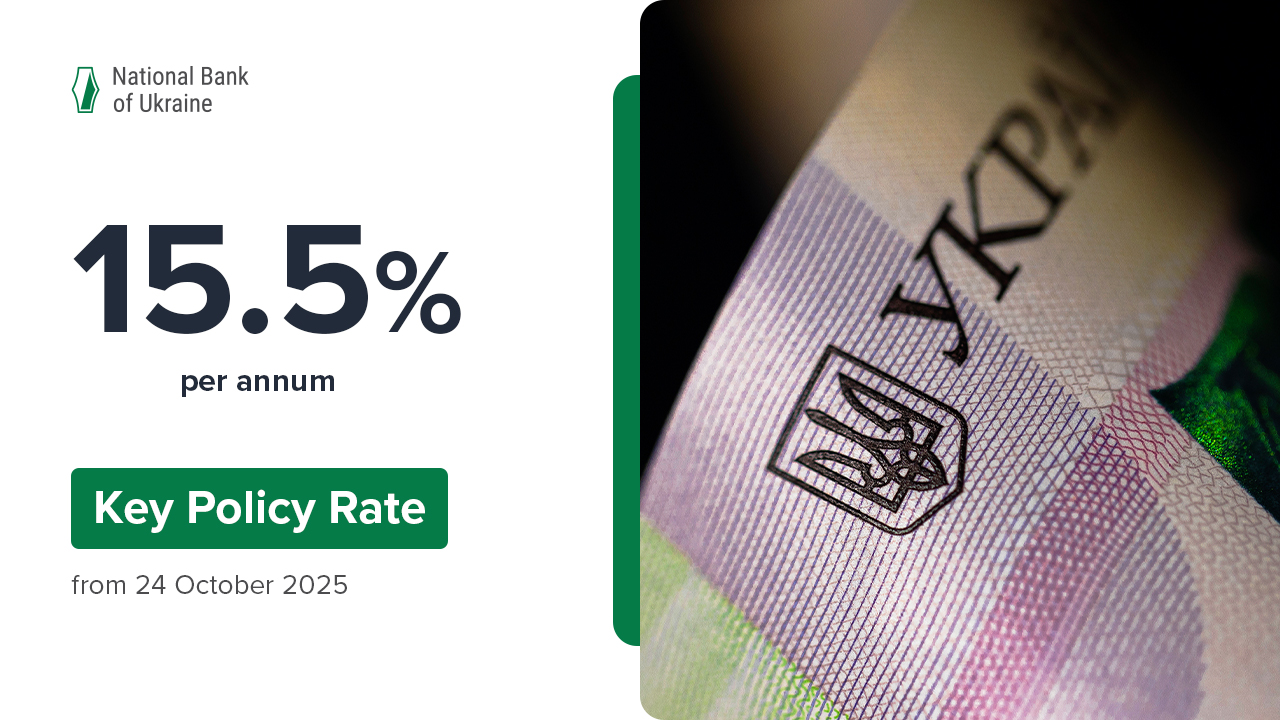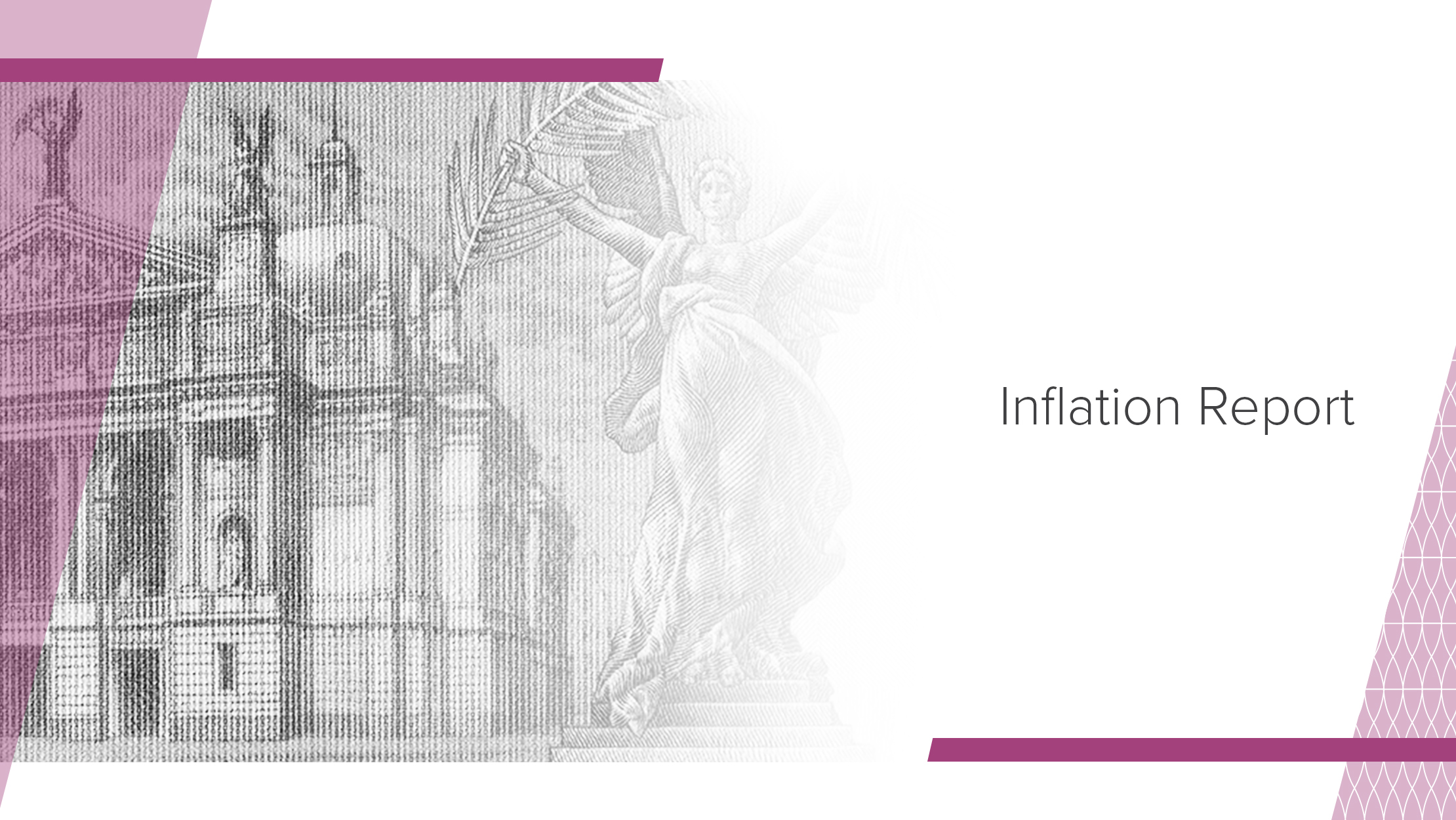In 2019–2020 headline inflation is expected to decline to the upper bound of the target range, reaching 5% ± 1 pp in early 2020, and hitting the target level of 5% at the end of that year. The forecasted price growth in 2019 remains unchanged at 6.3% as of the end of the year. This is according to the quarterly Inflation Report of January 2019.
The price growth in 2019 will be mainly driven by increased wages and administrated tariffs, which will boost the production costs of businesses and consumer demand. However, the pro-inflationary impact of these factors will gradually decline over the forecast horizon.
The disinflation will be ensured by the NBU’s tight monetary policy, which is necessary to bring inflation to its target, and the government’s conservative fiscal policy, achieved through major planned repayments of the public debt. In addition, low exchange rate volatility and the moderate growth rate of the prices of imported commodities, including energy and food, will contribute to the slowdown in inflation.
The forecast of real GDP growth remains unchanged as well. After the acceleration seen in 2018, real GDP growth will, as projected earlier, decelerate to 2.5% in 2019. In 2020 and 2021, it will start picking up, reaching 2.9% and 3.7%, respectively. The growth will be propelled by a gradual easing of monetary policy, which will bolster domestic demand, and a pick-up in investment activity as uncertainty over the political situation diminishes.
The NBU has also improved its international reserves forecast. After widening in 2018, the current account deficit will range between 3% and 4% of GDP throughout the forecast horizon. Continued cooperation with the IMF, which is a key assumption of the forecast, supported by a tight monetary policy will secure access to the international capital markets over the forecast horizon for both the private and public sectors. This will help finance the current account deficit and, together with inflows of official financing, secure international reserves at a level close to USD 21 billion.
Apart from revised macroeconomic forecasts, the January Inflation Report also covers a number of special topics, including the following:
- Inflation forecast assessment
Although declining noticeably, the actual inflation rate of 9.8% in 2018 exceeded the 8.9% forecasted by the NBU early in the year. The deviation of inflation from the target was largely due to factors over which monetary policy has only a limited effect. These factors include the growth in administered tariffs and prices and pressure from production costs, in particular labor costs.
- Investment imports as a driver of the widening of the current account deficit
In recent years, the current account deficit has been gradually widening. There was a similar period of widening after the crisis of 2008–2009, to a record-high value in 2013 (8.7% of GDP). However, the nature of the deficit widening changed significantly after the crisis of 2014–2015. In particular, the main driver of the current account deficit widening was not the consumer demand as before, but investment demand instead.
- Implementation of the NBU’s monetary policy under conditions of instability of the banking system’s structural liquidity position
For a long time, the banking system of Ukraine has been functioning against the background of a major structural liquidity surplus.In H2 2018, the surplus narrowed, influenced by an increase in demand for cash, which was due to an acceleration in economic growth and favorable conditions on the FX market.
In order to be more flexible in responding to changes in the liquidity of the banking system of Ukraine, the NBU introduced changes to the operational design of its monetary policy, effective from 11 January 2019, having determined that its main transactions would be the tenders to offer certificates of deposit with maturities of 14 days, and to provide refinancing over the same term.
Conducting both transaction types at the key policy rate will help maintain market rates at a level close to the key policy rate, and thus meet the NBU’s operational target. A simultaneous reduction in the frequency of scheduled tenders will facilitate the development of the interbank lending market by encouraging banks to conduct operations with each other, and to manage their own liquidity in a more efficient way.
The Inflation Report reflects the opinion of the National Bank of Ukraine as to the current and future economic state of Ukraine, with a focus on inflationary developments, on which monetary policy decision-making is based. The National Bank of Ukraine has been publishing its Inflation Report on a quarterly basis since April 2015.








